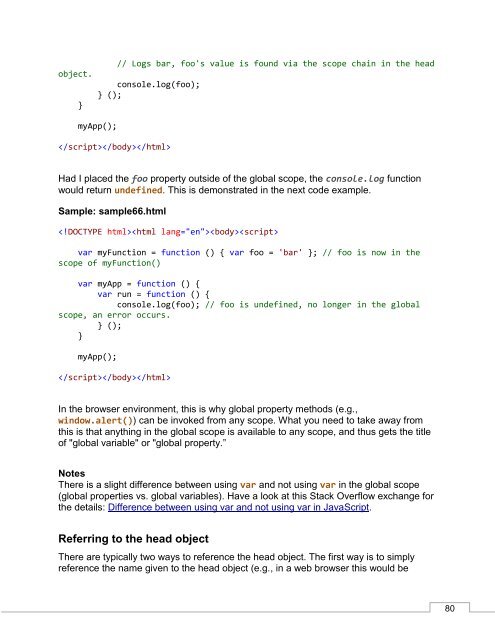JavaScript_Succinctly
You also want an ePaper? Increase the reach of your titles
YUMPU automatically turns print PDFs into web optimized ePapers that Google loves.
object.<br />
}<br />
// Logs bar, foo's value is found via the scope chain in the head<br />
console.log(foo);<br />
} ();<br />
myApp();<br />
<br />
Had I placed the foo property outside of the global scope, the console.log function<br />
would return undefined. This is demonstrated in the next code example.<br />
Sample: sample66.html<br />
<br />
var myFunction = function () { var foo = 'bar' }; // foo is now in the<br />
scope of myFunction()<br />
var myApp = function () {<br />
var run = function () {<br />
console.log(foo); // foo is undefined, no longer in the global<br />
scope, an error occurs.<br />
} ();<br />
}<br />
myApp();<br />
<br />
In the browser environment, this is why global property methods (e.g.,<br />
window.alert()) can be invoked from any scope. What you need to take away from<br />
this is that anything in the global scope is available to any scope, and thus gets the title<br />
of "global variable" or "global property.”<br />
Notes<br />
There is a slight difference between using var and not using var in the global scope<br />
(global properties vs. global variables). Have a look at this Stack Overflow exchange for<br />
the details: Difference between using var and not using var in <strong>JavaScript</strong>.<br />
Referring to the head object<br />
There are typically two ways to reference the head object. The first way is to simply<br />
reference the name given to the head object (e.g., in a web browser this would be<br />
80



